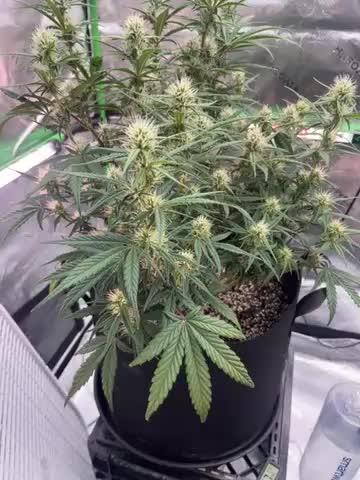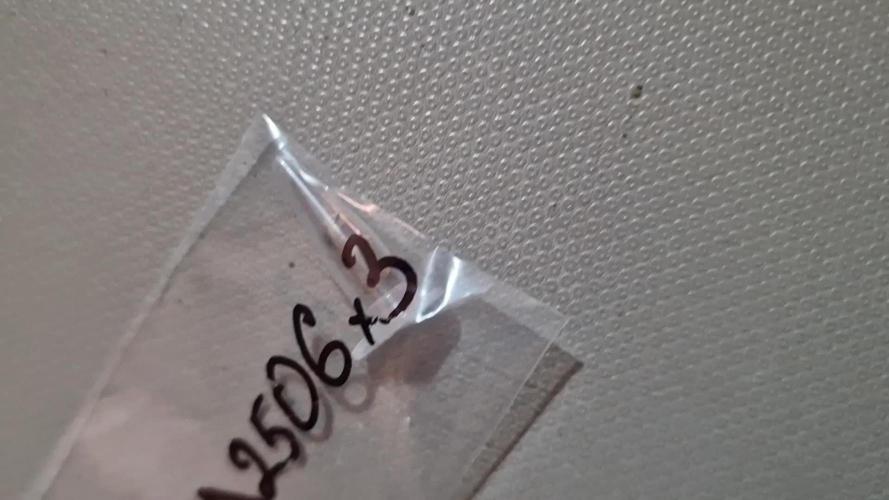The Grow Awards 2026 🏆 































Likes
Comments
Share


@Organic473
Follow
Got about 6 ripe seeds from this girl today…they’re already in the glass of water just waiting to pop. No smell from her as yet but she sure is sticky!
Likes
25
Share


@Le_Duc_Du_Bud
Follow
Salutations amis cultivateurs 🍁🌿
Aujourd'hui on débute la 5 semaines de floraison 🗓️
La Rainbow sherbert et magnifique, je lui donne 2 litres de nutriments tous les 2 jours, aucun problème de carence j'ai hâte de goûter c'est 30% de thc 😋😍
On voit maintenant des belle banane ce formé, odeur et incroyable ❤️🍁
Merci Kannabia variétés fantastiques 💥
Merci xpertnutrients impressionnant 💥
Processing
Likes
22
Share


@Luv2Grow
Follow
Day 37 - Did a little defoliating, I’m really hoping it doesn’t stunt her too much. Guess time will tell!
Day 38 - Everything seems to be ok after defoliating a bit yesterday, just feeding and waiting on her to really start flowering!
Day 39 - No major changes with her, still growing like a weed.
Day 40 - Still looking good.
Day 41 - Just waiting on her to start
flowering. Pistils are popping but no budding yet.
Day 42 - Growing like a weed for sure! Really starting to stretch. Think she might be starting to flower finally. Hopefully, cause she’s gonna outgrow the tent if she keeps stretching!
Processing
Likes
5
Share


@PETEROG
Follow
Hey everyone at week 4 know and wow have these girls grown early this week I applied some LST and all took really well to say it was my first time trying this
Likes
7
Share


@Portnugs
Follow
This week is going well, steady bud growth and development. Thc looks great and plants one of the girls looks about a month from finishing.
Lowered light intensity I have no more space to place the light further away! Plants stressed quite a bit got foxtailing on some of the buds and leaf "canoeing" let's see now how she reacts with less light.
Likes
6
Share


@ZombieKushAddicted
Follow
June25:🤦♂️🏿🤦♂️🏿
June27: the lizards have attacked again... for this... today we are going to raise the girls and place a mesh
June28: I have no idea how they did it... but they got in again!
Likes
15
Share


@Sergi0
Follow
A lo ultimo tuve una pequeña plaga de araña roja que pude mantener a raya cortando hojas afectadas, subiendo la humedad y bajando la temperatura... No voy a pesar en húmedo, cuando se sequen nomas... Luego de cosechar las The Ultimate pasare a revegetar ambas, espero que no muera antes jeje... Porque a las otras creo que le quedan mínimo 2 semanas más.
Likes
7
Share


@Robbaus
Follow
Bellissima settimana! Finalmente i fiori! C'è un profumo in quella stanza a dir poco meraviglioso, è la seconda volta che metto questa varietà (terza considerando la mimosa evo x orange punch) ed è di gran lunga la migliore, come profumi, velocità di crescita, bellezza delle cime.. Ne sono entusiasta! Non vedo l'ora di raccogliere! Procede alla grande, valori nella norma e ho dato oggi il 100% di potenza al led 🍀😎🎉🎉🍀🍀
Likes
22
Share


@GreenHouseLab
Follow
In the final week, highly resinous flowers that I cannot wait to sample from the 3 phenos. Had more pics and vids but the site won’t let me upload.
Hope everyone has a great week!
GHL
Likes
27
Share


@Jungle_James_Grows
Follow
Chopped tonight so not weighed them yet will do tomorrow if I can.
Ended up with 290g for 5 plants
But 5 same seeds and 5 different pheno's.
Judging by the looks the heaviest weight is from the one I topped .
Already weighed one plant got 28g dry weight. Got 4 more babies chopped tonight
Likes
14
Share


@GodZilla_Owner
Follow
Week 10 Update – Full Throttle with Advanced Nutrients 🌱
I’m now feeding 100% of the Advanced Nutrients schedule with all components. I noticed a slight calcium deficiency in the AN plants, so I’ve increased the base nutrients from 75% to 100%. Advanced Nutrients CalMag Xtra remains at 1ml/L, and it has been reliable throughout the grow with 0 EC osmosis water.
BioBizz#1 – BT42
The trichome ripeness is mixed—there are both amber and clear trichomes, so it’s not quite consistent yet. CalMag issues show up occasionally, but nothing that’s throwing me off balance—she’s doing fine! 🤞
AN#4 – BT42
She’s asking for a bit more calcium here and there but continues to dominate BioBizz#1 in terms of development.
EC: 2.5
pH: 6.4
Drain: pH 6.1 (EC not measurable due to organic soil).
AN#3 – BT38
This plant is visually about 2 weeks behind the others. The space between her and the lamp is down to 1-2cm—a disaster, but there’s nothing I can do at this point. PPFD is off the charts (1200), but she’s handling it and developing beautiful buds. Big respect to this strain—the stretch was no joke!
Humidity is well under control at
Likes
15
Share


@Waveform
Follow
Day 33: What an amazing height and bud gain in just 3 days! Lady #1 is 67 cm tall now, her sister a tad smaller. Both still have a great color, and I dared to cur away just the lowest branches and leaves that do not look like they could gain height in time. Really enjoying this strain so far!
At the end of their day, they are a bit dropping leaves, so clearly no hunger for more light. The impressive growth speed continued on their buds: Tallest lady at 70 cm now.
Their next morning shows growth is still at an impressive 5 cm/day as lady #1 with her leaves erected again stretches now 72, the maximum of my previous growth. Pulled the lights as close as possible to the ceiling and hope they won’t make it much more than 1 m. I activated the Sansi 30 W folded wings LED to give them somewhat of a morning and evening light and to add some more light to their overlapping center branches in the middle of "their" day. Sadly that’s causing some interference to the timelapse videos, but I can’t say they’re perfect if it wouldn’t.
Watching the timelapse video of day 34, I have the feeling the additional light rather irritates them. Maybe the interference is not only visible for electronic eyes. I’ll keep it off next day for comparisons.
Day 35 shows stretch speed has reduced indeed and they seem to be concentrating on leaf and bud growth instead. 75 cm, so we are currently at "only" 3 cm/day. Watered them with a HPE/Bud growth mix again last night, about 1 l each.
Well, forget my words about reduced growth. After they recovered during the night, we are at 77 cm for lady #1.
Which measured at 78 with hanging leaves in their day’s evening. I must have missed a day number – day 36 concludes their 5th week. I gave them another 2 l of fertilised water each and will lave them for the weekend again.
Video shows that growth concentrates now more on leaf and bud development than on gaining height. So I guess my 160 cm tent will be sufficient. For a moment I was worried, but it looks like stretch is over. Anyway, time to rearrange the camera next week. Leaves are running out of focus.
Likes
Comments
Share


@HeWhoGrowsKnows
Follow
Really bad consistency with these diaries. She’s been moving along. Week 6-7 I believe. Hard to distinguish when flower starts growing my first auto flower.
Likes
14
Share


@ThatoneAKguy
Follow
Not sure what more I can say that I didn’t say above. Patience, patience,patience! Veg longer with LED because they won’t stretch as much as you anticipate. They are very forgiving to a point and my nutes were organic until the end when I used kool bloom!to increase yield and made them a little unhappy. Cheers to dinafem for the best of the best when it comes to genetics!00
Processing
Likes
14
Share


@Gersora
Follow
So first of All i have to say this strain is recommendable. It is Not a heavy gitter that is for Sure, but it delivers a pleasent high with a relaxing Note. Flowering takes a little longer then it said but that is alright. i harvested at about 5% amber coulored trichomes.
I will give this strain a try i would recommend taking clones during flower, due to the exploding growth paterns afterwards.
Cheers to everyone who had a look
Frugo
Likes
3
Share


@LSchnabel
Follow
Flushed this week with straight water. Bud is smelling like sulfer and orange.
Bud structure was good but they don’t seem very dense. Nice color shift the last two weeks of growth.
Chopping down and hanging for a two week dry.























